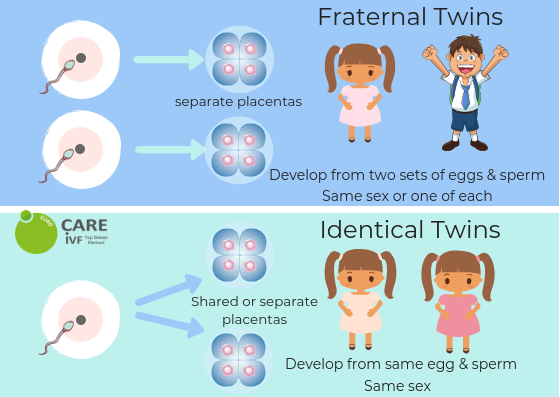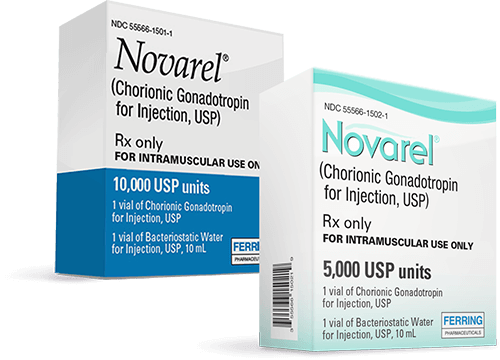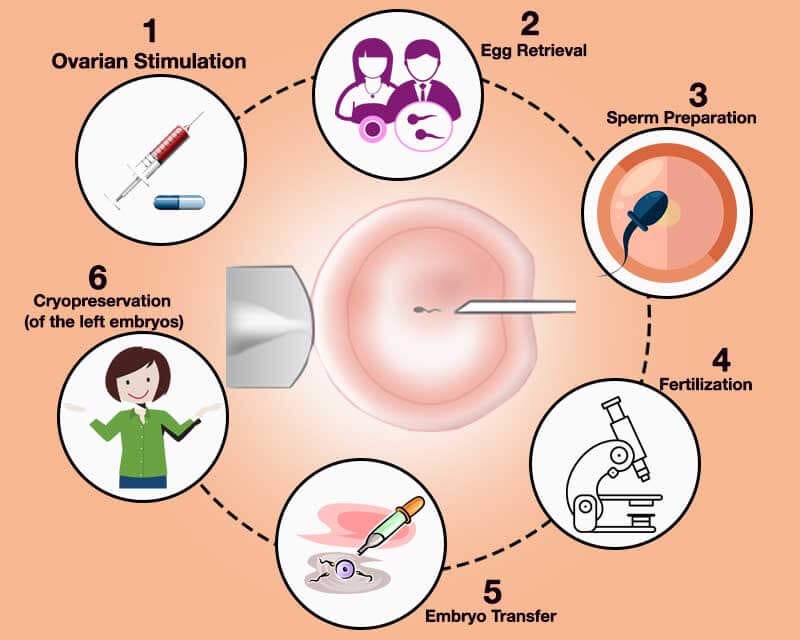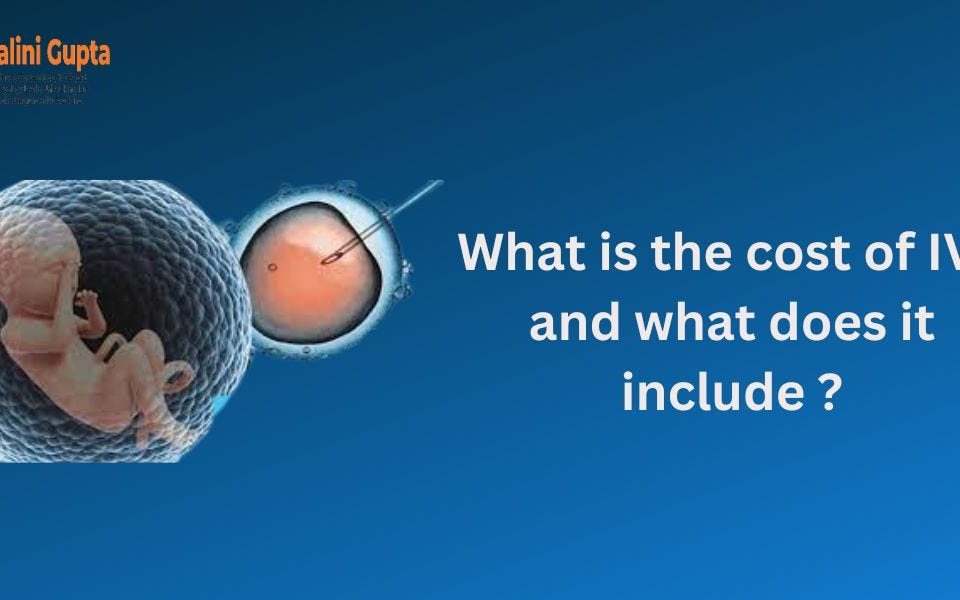
Why Does IVF Fail with Good Embryos?
April 26, 2025
When Did IVF Begin? A Deep Dive into the History of In Vitro Fertilization
April 26, 2025Can You Have Twins with IVF?
Twins have a special kind of magic, don’t they? Two little bundles of joy arriving at once—it’s no wonder so many people dream of it. If you’re exploring in vitro fertilization (IVF) to grow your family, you might be wondering: Can IVF give me twins? The short answer is yes, it absolutely can. But there’s so much more to the story than a simple yes or no. IVF opens up a world of possibilities—and a few surprises—when it comes to twins. Whether you’re hoping for two or just curious about how it all works, this article will walk you through everything you need to know. From the science behind it to the real-life risks and rewards, we’ve got you covered with the latest insights and practical tips.
Let’s dive into the fascinating world of IVF and twins, step by step.
What Is IVF, and How Does It Connect to Twins?
IVF is like a superhero for people facing fertility challenges. It’s a process where doctors take eggs from a woman’s ovaries, mix them with sperm in a lab, and then place the resulting embryos back into the uterus to grow into a baby. Pretty cool, right? Since it started in 1978 with the birth of Louise Brown—the world’s first “test tube baby”—IVF has helped millions of families welcome little ones.
So, where do twins come in? With IVF, doctors can control how many embryos they transfer into the uterus. Unlike natural conception, where usually just one egg is released, IVF often involves multiple embryos to boost the chances of pregnancy. If more than one sticks around and grows, voilà—twins! Sometimes, even a single embryo can split, leading to identical twins. It’s a bit like planting seeds: the more you plant, the higher the chance of multiple sprouts.
Back in the day, twin births from IVF were super common—about 1 in 3 IVF pregnancies in the U.S. resulted in multiples in the early 2000s. But things have changed. Today, thanks to better technology and smarter practices, the twin rate has dropped to around 5-10%, according to the CDC’s 2021 data. Still, twins remain a big part of the IVF conversation, and that’s what we’re here to unpack.
Why Does IVF Increase the Chance of Twins?
Twins happen in IVF for a few key reasons, and it’s not just random luck. Here’s the breakdown:
Multiple Embryo Transfers
The biggest reason IVF can lead to twins is that doctors sometimes transfer more than one embryo. Why? To up the odds of at least one implanting successfully. Think of it like rolling the dice twice instead of once—you’ve got a better shot at winning. If two embryos implant, you get fraternal (non-identical) twins, each from its own egg and sperm combo.
Embryo Splitting
Here’s a wild twist: even if only one embryo is transferred, it can split into two, creating identical twins. This happens naturally sometimes, but studies—like one from Fertility and Sterility in 2020—show it’s slightly more common with IVF (about 1-2% of single embryo transfers). Scientists think it might be linked to lab conditions or the embryo’s outer shell being poked during the process.
Fertility Meds Supercharge Your Ovaries
Before eggs are collected, women take meds to kick their ovaries into high gear, producing multiple eggs at once. More eggs mean more embryos, which can mean more chances for twins if multiple are transferred. It’s like turning a solo act into a full choir.
Your Unique Biology
Your age, family history, and even height can play a role. Women over 35 or those with twins in the family might have a natural edge toward multiples, and IVF just amplifies that. A 2023 study from the Journal of Assisted Reproduction found that taller women (over 5’6”) have a slightly higher twin rate with IVF—maybe because of hormone differences.
So, yes, IVF boosts your twin chances compared to natural conception (where twins occur in about 1 in 80 births). But how likely is it for you? Let’s dig into the numbers.
What Are the Odds of Having Twins with IVF?
Curious about your twin chances with IVF? It’s not a one-size-fits-all answer—it depends on a bunch of factors. Here’s what the latest stats and trends tell us:
- Overall Twin Rate: In 2021, the CDC reported that about 6.9% of IVF births in the U.S. were twins, down from 30% two decades ago. Why the drop? Clinics now prefer transferring just one embryo (called elective single embryo transfer, or eSET) to avoid risky multiple pregnancies.
- Number of Embryos Transferred: Transfer two embryos, and your twin odds jump to 20-40%, per a 2022 Human Reproduction study. Stick to one, and it’s closer to 1-2% (unless that embryo splits).
- Age Matters: Younger women (under 35) have higher success rates with IVF, including twins, because their eggs are top-notch. For them, twin rates with two embryos can hit 35%. Over 40? It drops to around 10-15%, as egg quality dips.
- Fresh vs. Frozen Embryos: Frozen embryo transfers (FET) are all the rage now, and they’ve got a slightly lower twin rate (5-8%) compared to fresh transfers (10-12%), per 2023 CDC data. Freezing lets doctors pick the best embryos later.
- Donor Eggs: Using donor eggs from a younger woman? Twin chances spike—up to 25% with two embryos—since those eggs are usually prime quality.
Quick Twin Odds Snapshot
| Scenario | Twin Chance (Approx.) |
|---|---|
| One embryo, fresh | 1-2% |
| Two embryos, fresh | 20-40% |
| One embryo, frozen | 1-1.5% |
| Two embryos, donor eggs | 25-30% |
Want twins? Transferring two embryos is your best bet. Want to avoid them? Stick to one. But there’s more to consider than just odds—let’s talk risks and benefits.
The Joys (and Challenges) of IVF Twins
Twins sound like double the fun, and for many, they are! But they come with a unique set of pros and cons. Here’s the real scoop:
The Upsides
✔️ Instant Family: One pregnancy, two kids—done! No need for another round of IVF, which can save time, money, and emotional energy.
✔️ Built-In Besties: Twins often share a special bond, keeping each other company from day one.
✔️ Efficiency Bonus: For couples who’ve struggled with infertility, twins can feel like hitting the jackpot after a long journey.
The Downsides
❌ Health Risks for Mom: Twin pregnancies mean higher chances of high blood pressure, gestational diabetes, and C-sections. A 2021 Obstetrics & Gynecology study found twin moms face a 2-3 times higher risk of preeclampsia.
❌ Baby Risks: Twins are more likely to arrive early (60% are preterm, per the CDC), which can mean low birth weight or NICU time.
❌ Double Duty: Two babies at once? That’s twice the diapers, feedings, and sleepless nights. It’s a marathon, not a sprint.
Real Talk: A Mom’s Story
Take Sarah, a 34-year-old from Texas. After two failed IVF cycles, she and her husband transferred two embryos, hoping for one baby. Surprise—they got twins! “It was overwhelming but amazing,” she says. “The first year was chaos—preemie checkups, no sleep—but now at 3, they’re inseparable. I wouldn’t trade it.”
Twins can be a blessing, but they’re not for everyone. So, how do you decide?
Should You Aim for Twins with IVF?
This is a big question, and it’s all about what you want—plus what’s safe. Here’s how to think it through:
Factors to Weigh
- Your Health: Got high blood pressure or a tricky medical history? Twins might be riskier. Chat with your doctor about your body’s limits.
- Money Talk: IVF isn’t cheap (around $12,000-$20,000 per cycle in the U.S., per ASRM). Twins mean one pregnancy but double the baby costs later—think cribs, formula, and college funds.
- Your Dream Family: Always pictured twins? Or do you just want one healthy kiddo? Be honest with yourself.
- Clinic Rules: Some clinics push single transfers to cut twin rates. Others let you choose, within reason.
Interactive Quiz: Are Twins Right for You?
Take a sec to answer these—grab a pen or just think it over:
- How do you feel about a higher-risk pregnancy?
- A) I’m okay with it
- B) I’d rather play it safe
- Can your budget handle two babies at once?
- A) Yep, we’re ready
- B) One at a time, please
- Do you dream of twins running around?
- A) Totally!
- B) One’s enough for now
Mostly A’s? Twins might be your vibe. Mostly B’s? Single embryo transfer could be the way to go. Either way, talk it out with your partner and doctor.
How to Boost (or Lower) Your Twin Chances
Want twins—or want to avoid them? You’ve got some control here. Let’s break it down:
To Increase Twin Odds
- Transfer Two Embryos: It’s the simplest way to up your chances. Discuss with your clinic—some cap it at one unless you’re over 38 or have had failed cycles.
- Pick Blastocysts: Embryos transferred at day 5 (blastocyst stage) have a higher implantation rate—and a slightly higher chance of splitting into identical twins, per a 2022 Reproductive BioMedicine Online study.
- Know Your History: If twins run in your family, mention it. Your natural tendency might shine through with IVF.
To Avoid Twins
- Go for eSET: Elective single embryo transfer is the gold standard now. It slashes twin rates to under 2% while still giving solid pregnancy odds (40-50% for women under 35, per CDC).
- Freeze First: Frozen transfers let doctors pick the strongest embryo, reducing the need for multiples. Plus, success rates are climbing—48% live births for frozen vs. 41% for fresh in 2021.
- Trust the Tech: Preimplantation genetic testing (PGT) spots the healthiest embryo, so one’s often enough.
Step-by-Step: Planning Your Transfer
- Meet Your Doc: Share your twin goals (yay or nay).
- Check Your Stats: Age, egg quality, past cycles—lay it all out.
- Set a Plan: One embryo or two? Fresh or frozen? Decide together.
- Ask About Risks: Get the full picture on twins vs. singletons.
- Roll With It: Embryos are unpredictable—be ready for surprises!
The Science Behind IVF Twins: What’s New?
Science is always moving, and IVF’s no exception. Here’s what’s fresh in 2025:
Identical Twins Mystery
Why do some embryos split? A 2023 study from Nature Communications suggests it’s tied to lab culture time. Longer time outside the body (like day 5 transfers) might stress the embryo, nudging it to divide. Cool, but still a puzzle—only 1-2% do this.
Twin Rates Dropping
Globally, IVF twin births are down. Europe leads the charge—Sweden’s twin rate is just 4%, thanks to strict single-transfer policies. The U.S. is catching up, with ASRM guidelines pushing eSET since 2017. Result? Safer pregnancies, fewer preemies.
AI Picks the Winner
Artificial intelligence is shaking things up. Clinics now use AI to scan embryos and predict which one’s most likely to implant. A 2024 trial from Journal of Reproductive Medicine showed AI-boosted single transfers hit a 55% success rate—higher than the old-school 45%. Fewer twins, more healthy singles.
Risks of IVF Twins: What You Need to Know
Twins are adorable, but they’re not risk-free. Here’s the nitty-gritty:
For Mom
- Preeclampsia: Blood pressure spikes in 10-15% of twin pregnancies vs. 5% of singles (American Journal of Obstetrics, 2022).
- Gestational Diabetes: Twice as common with twins—about 12% vs. 6%.
- C-Section Odds: Over 70% of twin births need surgery, per CDC, vs. 30% for singletons.
For Babies
- Preterm Birth: Most twins (60%) arrive before 37 weeks, raising risks like breathing issues or developmental delays.
- Low Birth Weight: Average twin weighs 5.5 lbs vs. 7 lbs for a singleton—smaller babies need extra care.
- NICU Stays: About 25% of IVF twins spend time in the NICU, per 2021 stats.
Hidden Risk: Vanishing Twin Syndrome
Sometimes, one twin stops growing early on, leaving a singleton pregnancy. It happens in 20-30% of IVF twin pregnancies, per a 2023 Ultrasound in Obstetrics study. It’s usually harmless but can be an emotional rollercoaster.
Managing a Twin Pregnancy from IVF
Got twins on the way? You’ve got this! Here’s how to rock it:
Prenatal Tips
✔️ Extra Checkups: Twins need more ultrasounds and monitoring—plan for visits every 2-3 weeks.
✔️ Nutrition Boost: Aim for 600 extra calories daily (300 per baby), with protein and folate-rich foods like eggs and spinach.
✔️ Rest Up: Fatigue hits harder—nap when you can, especially in the third trimester.
Delivery Prep
- Team Up: Pick an OB-GYN experienced with multiples.
- Plan Ahead: Twins often mean a C-section or early induction—talk options by week 34.
- Pack Double: Two car seats, two outfits—be ready!
Post-Birth Hacks
- Double Duty Gear: Invest in a twin stroller and feeding pillow.
- Call in Backup: Friends, family, or a postpartum doula can lighten the load.
- Sync Schedules: Feed and nap them together to save sanity.
Beyond Twins: Triplets and More?
IVF can go beyond twins—triplets or even quadruplets happen, though rarely now. In 2021, only 0.2% of IVF births were triplets or higher, thanks to tighter embryo limits. The risks skyrocket with three or more—90% are preterm, and moms face serious complications. Most clinics won’t transfer more than two embryos unless it’s a last resort.
What Real Families Say About IVF Twins
Let’s hear from the trenches:
- Jenna, 29, California: “We transferred two because we’d had losses before. Twins were a shock but a gift. The NICU weeks were tough, but they’re thriving at 2 now.”
- Mark, 41, Ohio: “We wanted one, did eSET, and got identical twins when it split. Crazy! Managing two newborns solo was wild, but their giggles make it worth it.”
These stories show the highs and lows—and how unpredictable IVF can be.
Busting Myths About IVF and Twins
There’s a lot of noise out there. Let’s clear it up:
- Myth: IVF always means twins.
Truth: Nope—single transfers are the norm now, and twins are less common than ever. - Myth: You can “order” twins with IVF.
Truth: You can up your odds, but nature still calls the shots. - Myth: Twins from IVF are always identical.
Truth: Most are fraternal from two embryos; identical twins are rarer.
Your Next Steps: Talking to Your Doctor
Ready to explore IVF? Here’s how to start:
- Find a Clinic: Look for one with high success rates and a twin policy you vibe with (check CDC’s ART report).
- Ask the Big Questions: “What’s my twin risk? How many embryos do you recommend? What’s eSET like for me?”
- Get Personal: Share your health history, budget, and family goals.
- Stay Open: Twins might happen—or not. Flexibility is key.
Poll Time: What’s Your Take?
What’s your dream IVF outcome?
- A) Twins, please!
- B) One healthy baby is perfect.
- C) I’m just along for the ride.
Drop your vote in your head—or share with a friend!
The Future of IVF and Twins
Where’s this all heading? By 2025, expect even fewer twins as AI and genetic testing get sharper. Clinics are doubling down on singletons for safety, but twins will always be part of the IVF story. A 2024 Fertility Today report predicts twin rates could dip below 5% in the U.S. by 2030. Still, for some, that double stroller dream lives on.
Wrapping It Up: Twins, IVF, and You
So, can you have twins with IVF? Yep, it’s totally possible—and more common than with natural conception. Whether it’s two embryos implanting or one splitting into a surprise duo, IVF offers a unique path to twins. But it’s not just about the odds—it’s about what’s right for you. The science is amazing, the risks are real, and the rewards? Well, they’re as big as your heart can handle.
Twins might be your goal, or maybe you’re Team One-at-a-Time. Either way, IVF’s a journey, not a guarantee. Armed with the latest info—from dropping twin rates to AI breakthroughs—you’re ready to take the next step. Chat with your doctor, weigh your options, and dream big. Twins or not, your family’s story is about to get a whole lot sweeter.
What’s your twin take? A double delight or a single spotlight? Whatever you choose, here’s to building the family you’ve always wanted—one amazing baby (or two!) at a time.




